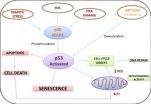(Press-News.org) There have been several news reports that the world's first dengue vaccine will be available next year. However, the latest clinical trials show that the vaccine only provides a protection of around 50 per cent for DENV-2 and DENV-1, which are commonly found in Singapore.
DENV-1 accounts for 90 per cent of infections locally as a large population lacks the immunity against this particular dengue virus serotype. Until a vaccine that can offer higher protection becomes available, it is crucial to find a suitable treatment for dengue fever, as there is presently none available world-wide.
The good news is that a team of Singapore General Hospital (SGH) and Duke-NUS Graduate Medical School (Duke-NUS) researchers are now a step closer to finding a treatment for dengue fever. In the CELADEN study completed last year, the team found that Celgosivir, a medicine derived from a naturally occurring compound found in the seeds of the Moreton Bay Chestnut tree, is generally safe and well-tolerated by patients affected with the dengue virus.
Participants recruited for the study were admitted to SGH for five days, during which time they received either the placebo or Celgosivir. They continued to be followed up on days 7, 10 and 15 at the outpatient clinics where clinical histories and blood were taken. A physical examination of the patient was also done during these sessions.
"We found that the drug regimen in our CELADEN study was well-tolerated. And because dengue virus is cleared from the blood within three to five days and fever subsides in the same period, a regimen with more frequent dosing will be tested in the next phase of our trial to see its therapeutic effect," said Dr Jenny Low, Senior Consultant, Department of Infectious Diseases, SGH, and Principal Investigator of the study.
"Prior work conducted at Duke-NUS has demonstrated that dose regimen is an important factor in mediating the antiviral effects of Celgosivir," said Professor Subhash Vasudevan, Emerging Infectious Diseases Program at Duke-NUS.
The findings of the study were published in Lancet Infectious Diseases, a world-leading peer-reviewed scientific medical journal, on 28 May 2014.
Moving to the next phase of the study, SingHealth and Duke-NUS have signed an exclusive licensing agreement with 60 Degrees Pharmaceuticals to evaluate the efficacy and safety of an alternate dosing regimen as well as combination drug treatments in dengue patients. The NUS Industry Liaison Office, which is part of NUS Enterprise, took the lead in coordinating and facilitating this multi-party collaboration and the license negotiation.
"Other viral diseases such as hepatitis C and HIV required combination regimens to demonstrate clinical benefit. This may also be the case for dengue. To that end, 60P has also entered into a collaboration agreement with NUS earlier in March 2014 to investigate the utility of drug combinations in animal models. This agreement builds on prior collaborations between the parties to evaluate the antiviral effects of other approved drugs," said Mr Geoff Dow, CEO, 60P.
Dengue fever is an acute febrile illness transmitted by mosquitoes, which affects half the world's population. There are 96 million symptomatic infections, 500,0000 hospitalisations and 25,000 deaths per year attributed to the disease. The economic burden is $12 billion. In Singapore, as elsewhere, the incidence of the disease has continued to increase despite aggressive control measures.
INFORMATION:
About SGH
Singapore General Hospital, a member of Singapore Health Services, is the public sector's flagship hospital. Established in 1821, SGH is Singapore's largest acute tertiary hospital with 1,700 beds and national referral centre offering a comprehensive range of 36 clinical specialties on its campus. Every year, about 1 million Singaporeans benefit from advanced medical care delivered by its 800 specialists. As an academic healthcare institution and the bedrock of medical education, SGH plays a key role in nurturing doctors, nurses and allied health professionals, and is committed to innovative translational and clinical research in her continual strive to provide the best care and outcomes to her patients.
http://www.sgh.com.sg
About Duke-NUS Graduate Medical School Singapore
The Duke-NUS Graduate Medical School Singapore (Duke-NUS) was established in 2005 as a strategic collaboration between the Duke University School of Medicine, located in North Carolina, USA and the National University of Singapore (NUS). Duke-NUS offers a graduate entry, 4-year M.D. (Doctor of Medicine) training program based on the unique Duke model of education, with one year dedicated to independent study and research projects of a basic science or clinical nature. Duke-NUS also offers M.D/PhD and PhD programs. Duke-NUS has five Signature Research Programs: Cancer & Stem Cell Biology, Neuroscience and Behavioural Disorders, Emerging Infectious Diseases, Cardiovascular & Metabolic Disorders, and Health Services and Systems Research.
Duke-NUS and SingHealth, Singapore's largest public healthcare group, have established a strategic partnership in academic medicine. This initiative will guide and promote the future of medicine, tapping on and combining the collective strengths of SingHealth's clinical expertise and Duke-NUS' biomedical sciences research and medical education capabilities.
For more information, please visit http://www.duke-nus.edu.sg
About 60 Degrees Pharmaceuticals
60 Degrees Pharmaceuticals (60P) was founded in 2010 with a mission to discover and develop new medicines for treatment of tropical diseases. Initially 60P has focused on small molecules therapeutics for dengue fever, and plans to develop a portfolio of projects across several disease areas. The company sources intellectual property from, and collaborates with, academic and public research institutions in Singapore, Australia, the United States to commercialise new molecules with established safety profiles. 60P, together with its Singaporean and Australian collaborator, plans to initiate a Phase II study in dengue patients in 2015.
http://www.60degreespharma.com
Researchers at SGH and Duke-NUS a step closer to finding treatment for dengue fever
2014-07-31
ELSE PRESS RELEASES FROM THIS DATE:
Senescence in adipose-derived stem cells and its implications in nerve regeneration
2014-07-31
Adult mesenchymal stem cells, specifically adipose-derived stem cells have self-renewal and multiple differentiation potentials and have shown to be the ideal candidate for therapeutic applications in regenerative medicine, particularly in peripheral nerve regeneration. Adipose-derived stem cells are easily harvested, although they may show the effects of aging, hence their potential in nerve repair may be limited by cellular senescence or donor age. Cellular senescence is a complex process whereby stem cells grow old as consequence of intrinsic events (e.g., DNA damage) ...
A new way to generate insulin-producing cells in Type 1 diabetes
2014-07-31
VIDEO:
Researchers discover a simple peptide that can induce new beta-cell formation in the pancreas. The findings show promise for a new approach to treating Type 1 diabetes.
Click here for more information.
La Jolla, Calif., July 31, 2014 -- A new study by researchers at Sanford-Burnham Medical Research Institute (Sanford-Burnham) has found that a peptide called caerulein can convert existing cells in the pancreas into those cells destroyed in type 1 diabetes-insulin-producing ...
Researchers uncover cause of gum disease related to type 2 diabetes
2014-07-31
Going to the dentist isn't fun for anyone, but for those with periodontal disease related to type 2 diabetes, a new research discovery may have them smiling. In a report appearing in the August 2014 issue of the Journal of Leukocyte Biology, one of the most important blood cells involved in the human immune response, B cells, are shown to promote inflammation and bone loss in type 2 diabetes-associated periodontal disease. These findings support the idea that treatments that manipulate the responses of B cells may treat or prevent this complication.
"Our study identified ...
Breakthrough in understanding of important blood protein
2014-07-31
The human body contains a unique protein that has the unusual property of destroying itself after a few hours of existence - it must therefore be continually recreated and is no stable protein. The protein, called PAI-1, affects many physiological functions, including the dissolving of coagulated blood. If you get a blood clot, it is due to the fact that the a clot has accumulated in a blood vessel, and therefore PAI-1 is extremely important – for the human body's survival in general and for helping people with a blood clot or other blood diseases in which coagulation plays ...
Common drugs adversely impair older adults' physical as well as cognitive functioning
2014-07-31
INDIANAPOLIS -- A class of medications previously linked to cognitive impairment in older adults also appears to negatively affect their physical functioning according to investigators from the Regenstrief Institute, the Indiana University Center for Aging Research, the University of East Anglia and several other United Kingdom institutions.
In a systemic review of more than a decade of studies on the effects of drugs with anticholinergic properties, they report that these drugs have a significant adverse effect on both cognitive and physical functioning, including the ...
Research finds numerous unknown jets from young stars and planetary nebulae
2014-07-31
For many years astronomers have known that young 'protostars' drive supersonic jets of gas from their north and south poles. However, this is the first time that so many of them have been detected at once.
The results come from a five year survey undertaken with the UK Infra-Red Telescope and are expected to prompt significant changes in the understanding of the planetary nebulae population in the Galaxy, as well as the properties of jets ejected from young forming stars.
By examining images of excited hydrogen molecules at infrared wavelengths, scientists have been ...
The Rim Fire 1 year later: A natural experiment in fire ecology and management
2014-07-31
The enormous conflagration known as the Rim Fire was in full fury, raging swiftly from crown to crown among mature trees, when it entered the backcountry of Yosemite National Park in California's Sierra Nevada in late August 2013. But inside the park, the battle began to turn, enacting a case study in the way management decisions and drought can combine to fuel large, severe fires.
"When the Rim Fire hit the park, it eventually encountered lands where fire had been used as a management tool, rather than immediately suppressed," said Hugh Safford, a regional ecologist ...
Congressional rift over environment influences public
2014-07-31
American citizens are increasingly divided over the issue of environmental protection and seem to be taking their cue primarily from Congress, finds new research led by a Michigan State University scholar.
The gap between conservatives who oppose environmental protection and liberals who support it has risen drastically in the past 20 years, a trend seen among lawmakers, activists and – as the study indicates – the general public as well, said sociologist Aaron M. McCright.
The findings echo a June 12 Pew Research Center poll showing that, in general, Republicans and ...
Surgeons report significant migraine relief from cosmetic eyelid surgery technique
2014-07-31
New Orleans, LA – Dr. Oren Tessler, Assistant Professor of Clinical Surgery at LSU Health Sciences Center New Orleans School of Medicine, is part of a team of plastic and reconstructive surgeons who report a high success rate using a method to screen and select patients for a specific surgical migraine treatment technique. More than 90% of the patients who underwent this surgery to decompress the nerves that trigger migraines experienced relief and also got a bonus cosmetic eyelid surgery. The study, which confirms the benefit of surgical treatment for migraines and expands ...
Chemists demonstrate 'bricks-and-mortar' assembly of new molecular structures
2014-07-31
BLOOMINGTON, Ind. -- Chemists at Indiana University Bloomington have described the self-assembly of large, symmetrical molecules in bricks-and-mortar fashion, a development with potential value for the field of organic electronic devices such as field-effect transistors and photovoltaic cells.
Their paper, "Anion-Induced Dimerization of 5-fold Symmetric Cyanostars in 3D Crystalline Solids and 2D Self-Assembled Crystals," has been published online by Chemical Communications, a journal of the Royal Society of Chemistry. It is the first collaboration by Amar Flood, the James ...





